5 big analyst AI moves: Microsoft and Amazon downgraded, IBM started at Outperform
Stocks finished last week mostly flat to lower, with the S&P 500 down by around 40 bps on Friday, while the NASDAQ 100 finished lower by around 50 bps. This came following a Friday morning rally met by selling that started a bit after 10 a.m.
The selling was enough to push the S&P 500 more than 1% off its morning highs and create a bearish engulfing candle on the daily chart. It was the second such candle in a week.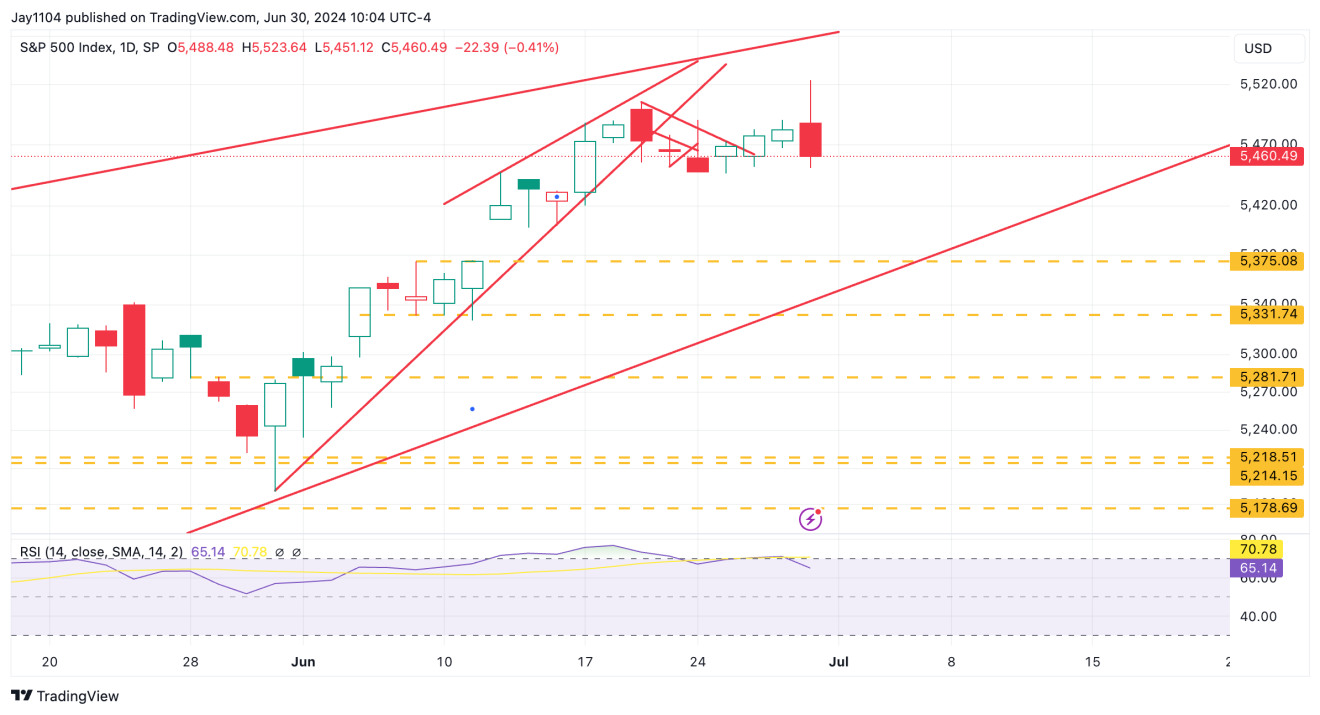
This has created 2 key reversal patterns that the bulls will look to avoid this week:
1. 2B Daily Top Reversal Pattern
It also created what appears to be a 2b top reversal pattern. These patterns don’t always work, but they are nice to use because they give us levels to work with that tell us a lot about where the market may be heading.
This pattern often forms when an index or stock attempts to make a new, fails to hold that high, and then closes below the previous closing high.
2. Weekly Close Pattern
Even on the weekly candle, we saw this week’s high surpass last week’s high, with the index closing lower on the week. This doesn’t happen often, but it has happened several times since January 2020.
Over that time, it appears to have occurred eight other times, and 7 of those times, it has led to a lower week the following week. In 5 of the seven occasions, it led to declines of 35.3%, 11.2%, 14.4%, 12.9%, and 19.3%.
On the other two occasions, the index fell by 2.1%; on the other, it fell by 2.5%. There was only one time the index moved higher: in January 2021. So, the signal carries some weight with it and should not be ignored or easily dismissed.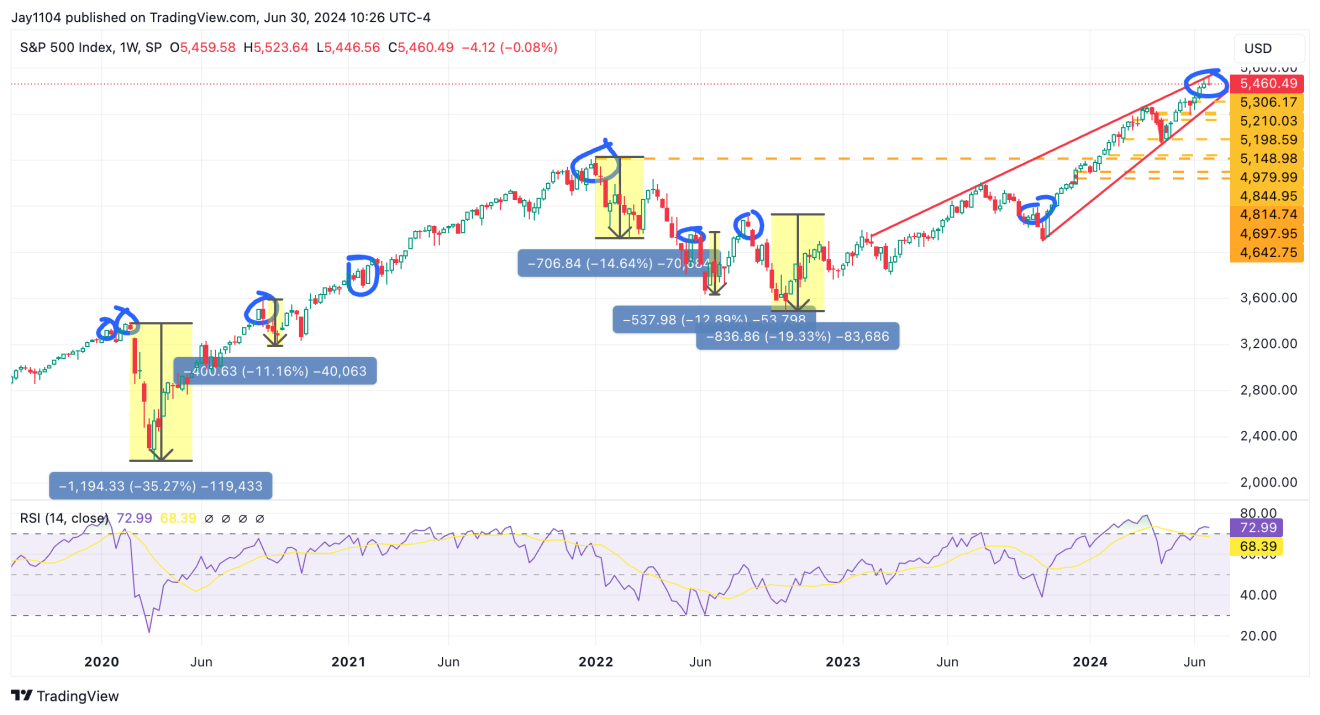
This tells us a couple of things that we can use to help us better assess what comes next. If the S&P 500 closes above 5,487.02 on the daily chart this week, the daily 2b top trading pattern will be invalidated.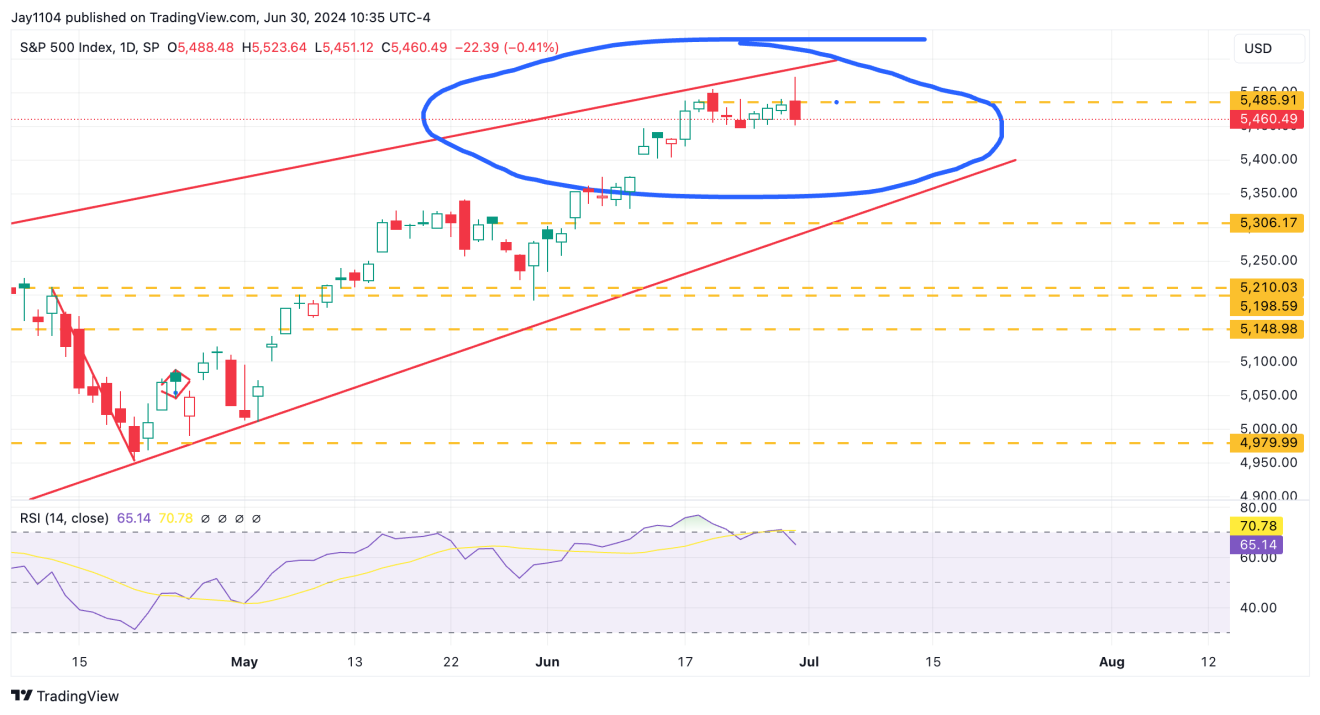
The weekly reversal candle will be invalidated if the S&P 500 closes above 5464.61 on the weekly chart.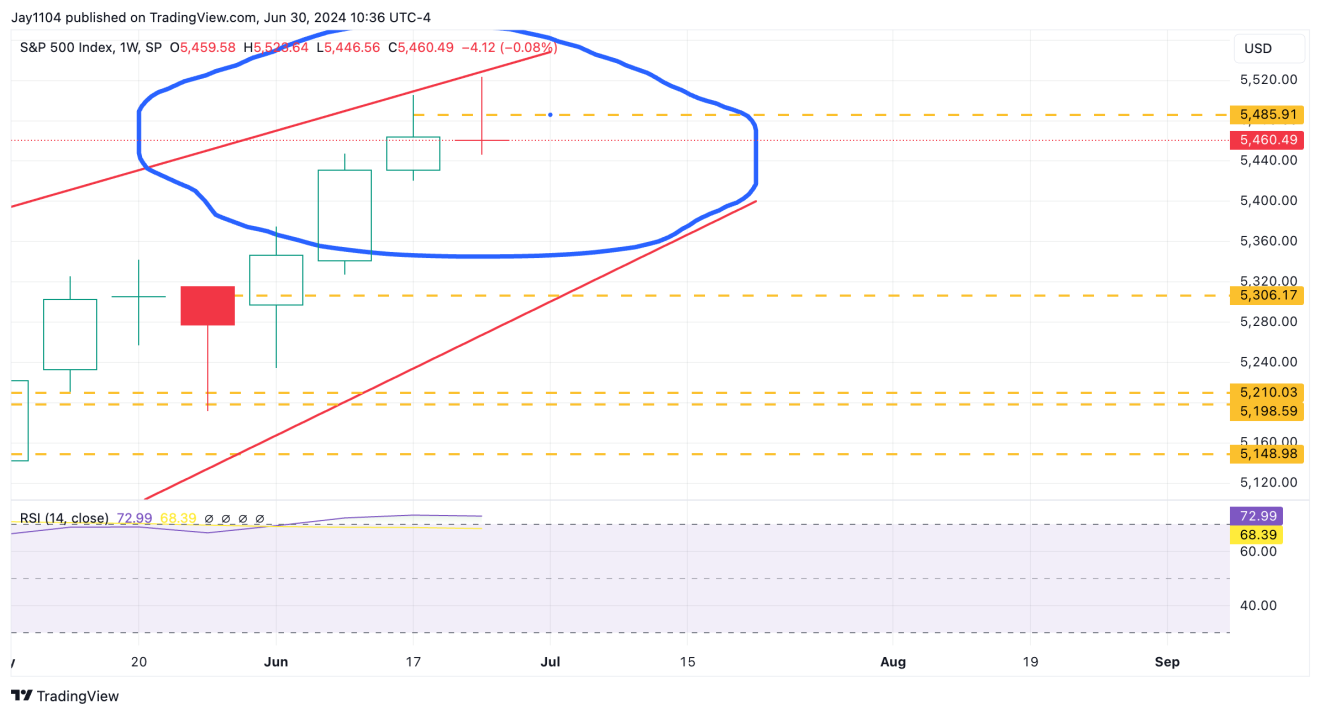
People will look at this and say it is ridiculous to think that the S&P 500 could drop by some of the abovementioned values. I could also argue that it would have been foolish to believe that the S&P 500 could rally as much as it has since the October 2023 low.
It took the S&P 500 271 days to rally approximately 18% from 4,100 on April 8, 2021, to the intraday high of 4,818 on January 4, 2022, when overnight rates were 0%, and the Fed was conducting QE. It has taken the S&P 500 245 days to rally 34.4% from its low on October 27 of 4,100 to its intraday high the week of June 28, with overnight rates of 5.33% and the Fed draining the balance sheet.
Which one sounds more ridiculous now? So caution is warranted currently, and being cautious is not the same as being short or perma bearish. It is about assessing the odds and managing one’s risk.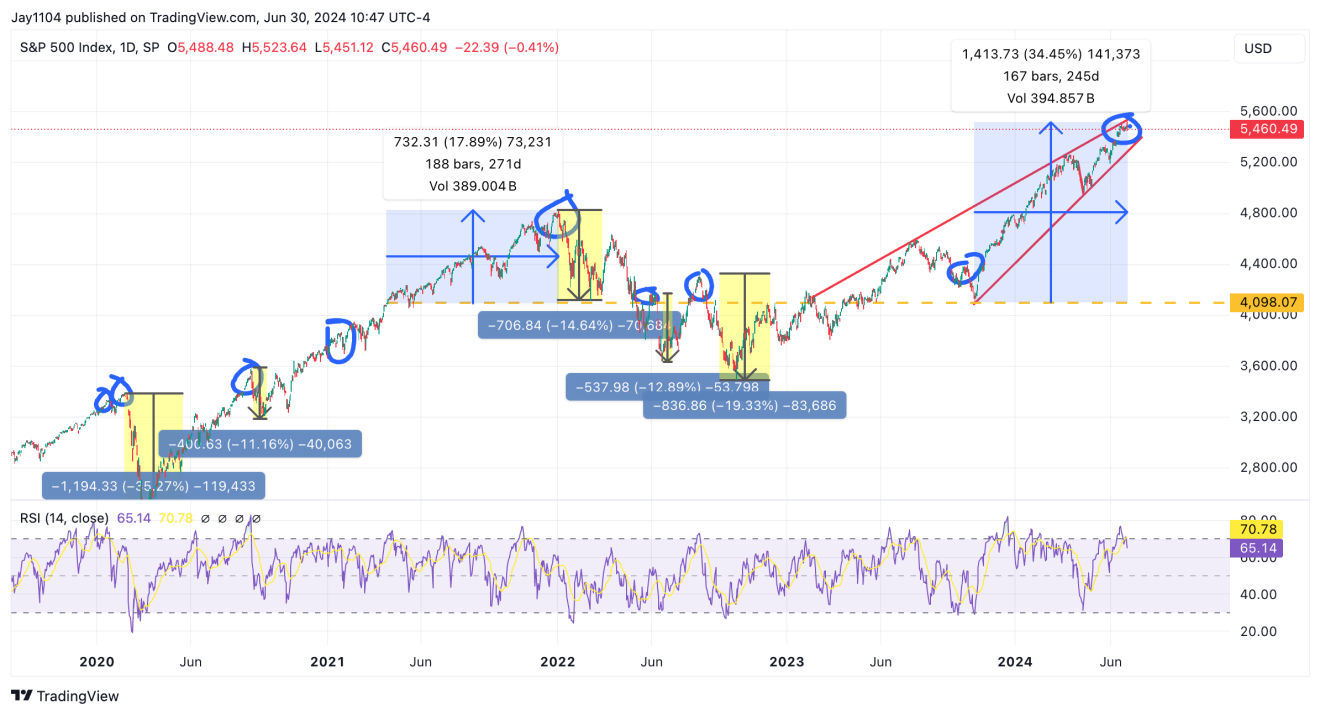
Some conditions in this market are at extremes, especially regarding implied correlations, which closed below 6, the lowest level ever, not by a little but by more than a whole point at 5.59 versus the previous low of 6.78 in October 2017.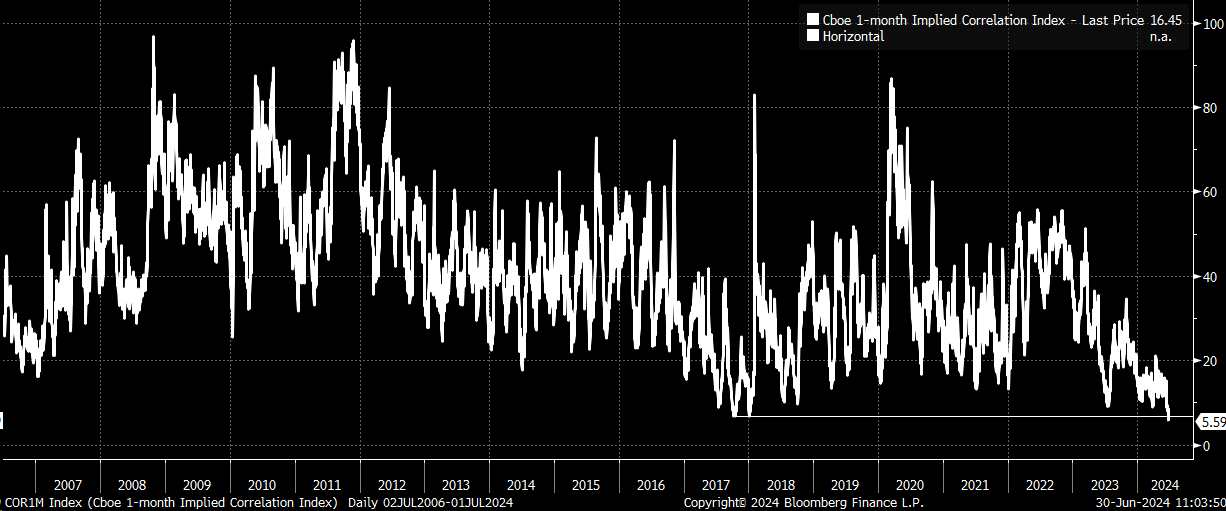
Meanwhile, high-yield credit spreads are trending higher as stock prices rise. We last saw these conditions develop in January 2020 and the fall of 2021.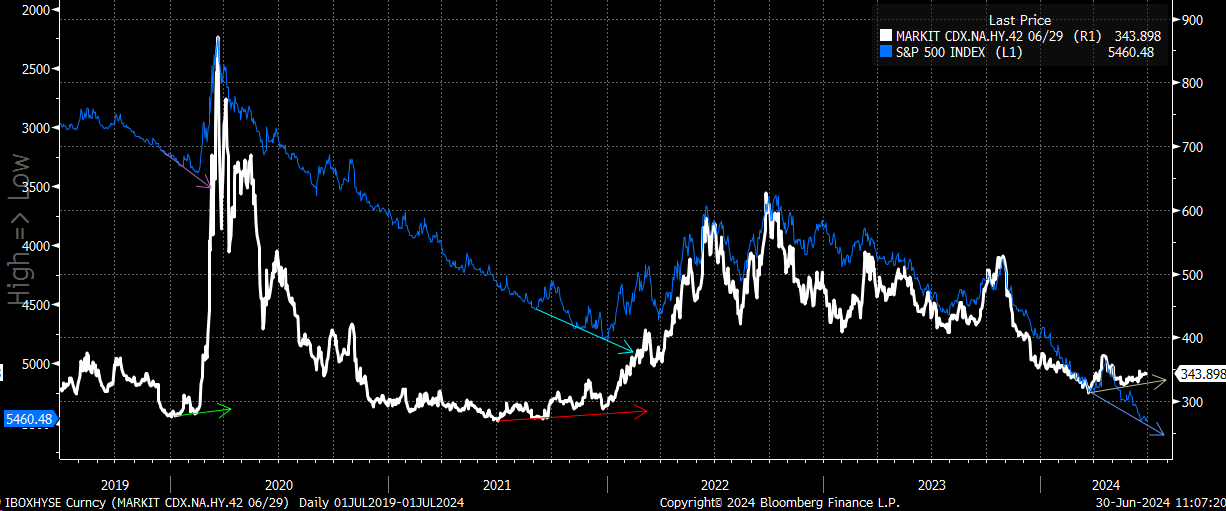
In the meantime, the SMH appears to be in the process of completing a giant ascending broadening wedge, as the 20-day moving average is serving as support for the ETF. A break of support at $255 would confirm that the pattern has broken and that a move lower has begun.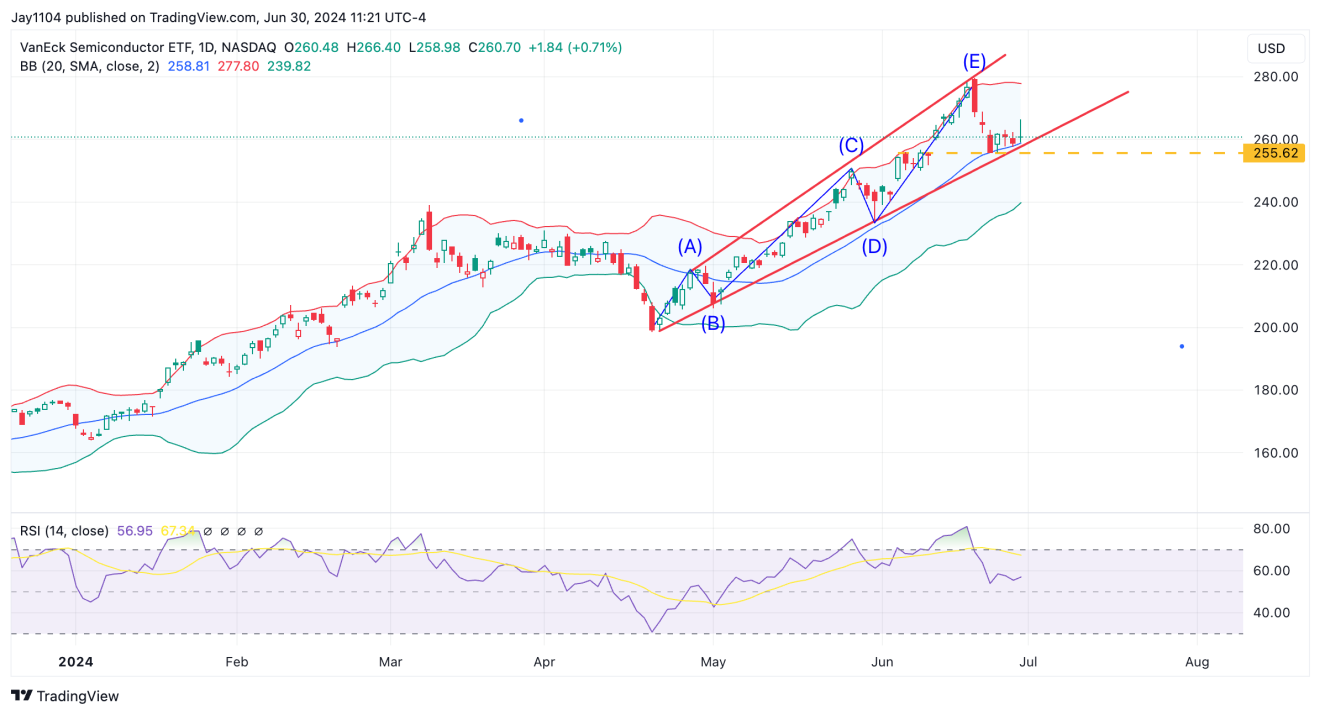
Meanwhile, Nvidia (NASDAQ:NVDA) is wedged between the 10-day exponential and the 20-day simple moving averages, which means that things are quite easy because a close above the 10-day EMA could signal a move higher, followed by confirmation, which could lead to pushback to $130. A close below the 20-day moving average, followed by confirmation, could open the floodgates.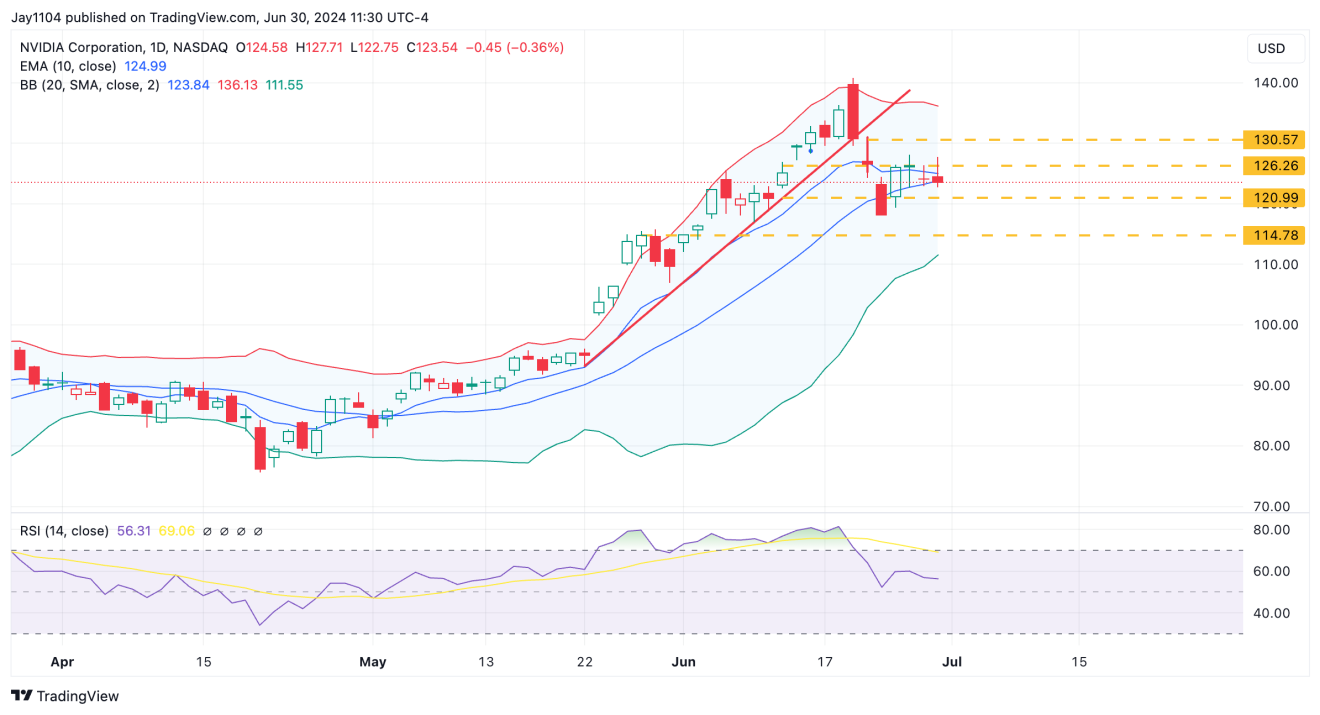
That’s all from me. You may not hear from me again until July 10.
Have a happy Fourth of July!
Which stock should you buy in your very next trade?
AI computing powers are changing the stock market. Investing.com's ProPicks AI includes dozens of winning stock portfolios chosen by our advanced AI.
Year to date, 3 out of 4 global portfolios are beating their benchmark indexes, with 98% in the green. Our flagship Tech Titans strategy doubled the S&P 500 within 18 months, including notable winners like Super Micro Computer (+185%) and AppLovin (+157%).
Which stock will be the next to soar?
